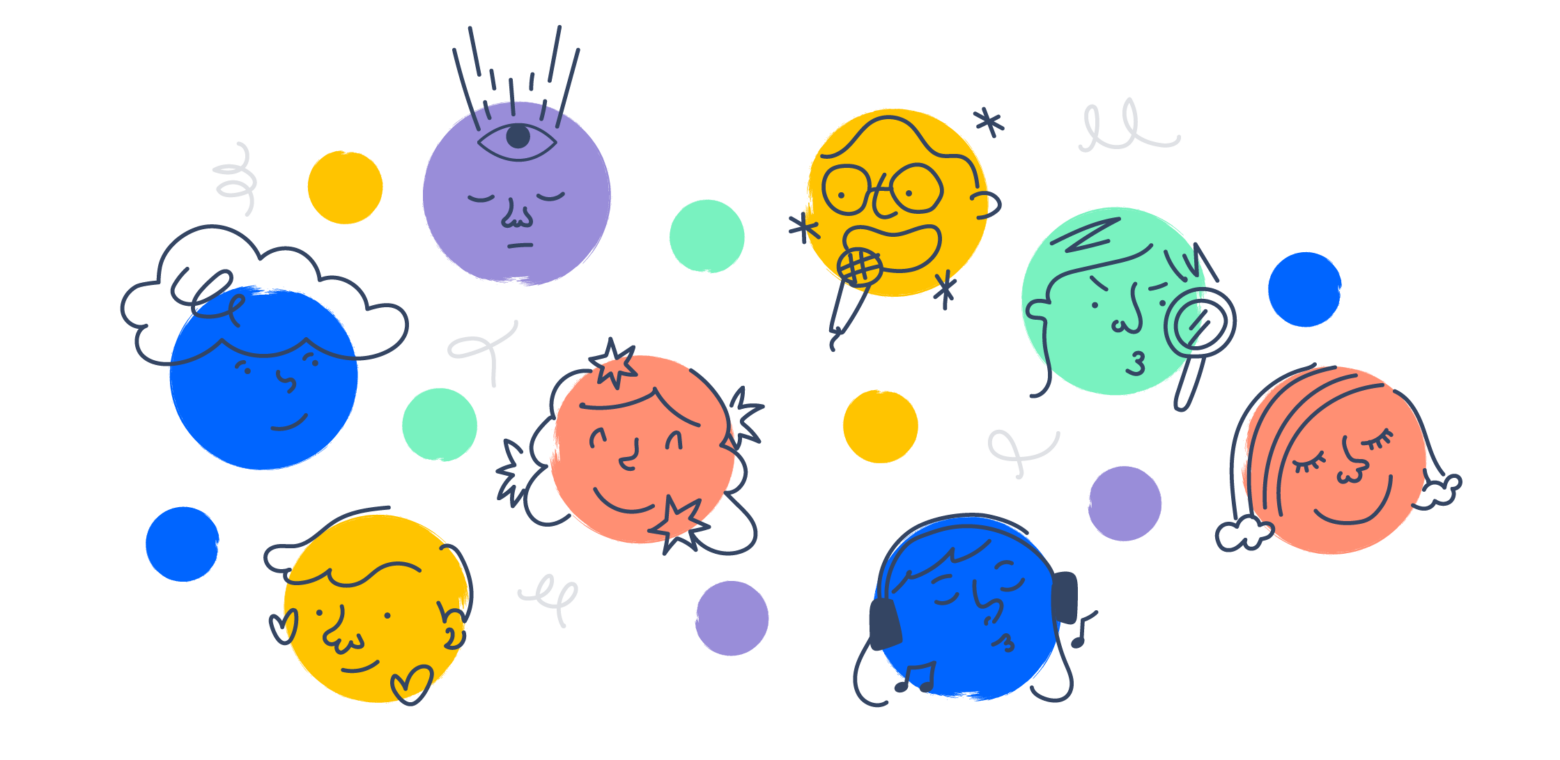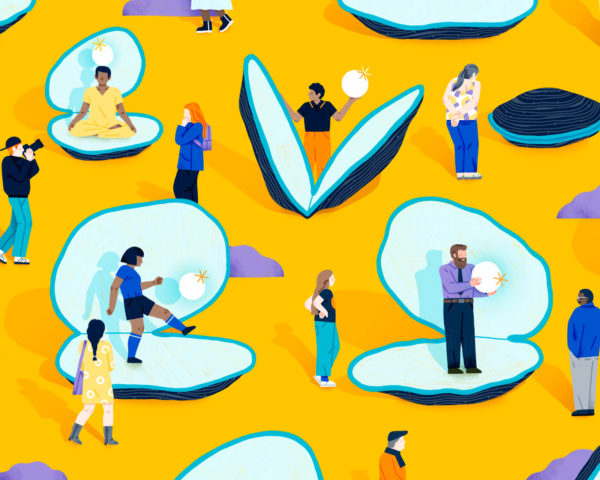Personality in the workplace: are you bringing it?
Let’s talk about what your “full self” at work really means.
We’ve refreshed a lot of workplace norms in recent years. Somewhere along the way, the idea of bringing your “full self” to work appeared.
Advocates claim it’s elevating careers and building happier, more successful teams. But for others, the concept sounds a little out there. (There are some who even make distinctions between “full self” and “whole self”!)
In other words, updating norms is hard.
Steven Aldrich, chief product officer at GoDaddy, explains his understanding like this:
“For me, it’s being comfortable with what I’m good at and not good at, it’s talking about things that I’m passionate about, and it’s being clear that I’m going to make decisions at work and outside of work with the same set of values in a very consistent way.”
Personality at work – you don’t have a choice
The truth is, we all have unique personalities. We have different rhythms and proclivities. Some of us are morning people, some night owls. Some of us really need quiet and isolation to focus, others like the buzz of a workplace and thrive around chatter and interruptions. Some push buttons, some aim to please. But whatever personality we have, it’ll eventually show up at work.
You don’t have a choice but to bring your whole self to work. It’ll show up whether you want it to or not.
Jessica Skupien, Organizational Consultant
Sometimes, the complexity of individual personalities means misunderstandings occur. It’s natural, but often difficult to navigate at work. Atlassian’s unofficial sixth value is: “Seek first to understand.” It really helps when a teammate’s behavior is confusing or inconsistent. Seeking first to understand better before jumping to (often negative) conclusions is a powerful practice to establish. It’s also helpful to create opportunities for people to explain more about who they are, and how they like to work. We created a play in our Altassian Team Playbook called My User Manual to help teams work better together by essentially creating a “personal user manual” to understand how to work best with each teammate.
Because your teammate might be afraid of coming off the wrong way. Maybe you sometimes worry about how you might seem – moody or quiet – and others might think you’re a jerk. When in reality you’re not a jerk, you’re just focused on getting something done. Or maybe you had a tricky morning at home at it’s on your mind.
People are different, and work differently. Everyone brings a different personality to the table.
What Atlassians do: run a personality test
Another way to help personalities blend and not clash is through personality testing.
Walk by the desks of the Jira Service Desk marketing team and you’ll see something interesting hanging on the wall: a poster with the team’s first names on one column and their corresponding personality type in the other.
There’s the ENTP (the “debater”), INTJ (“the architect”), INFP (“the mediator”).

The team used the free personality assessment available at 16Personalities. The assessment takes just a few minutes to do online by asking how well you agree with statements like “people can rarely upset you.” (You can learn more about the methodology behind the assessment here.)
Each personality type includes a detailed explanation, including sections on how different types interact in the workplace. For example, “The running theme for logicians is their desire for solitude, need for intellectual stimulation, and the satisfaction of the final piece of a puzzle clicking into place.”
The assessments gave everyone on the Jira Service Desk team a better baseline for understanding their colleagues, even though many of them had worked together for years. Suddenly past behaviors and quirks all sort of clicked.
“Some of it was spot on,” says Molly Bronstein, a product marketing manager on the Jira Service Desk team. “You learn how to work with people, you learn what makes people tick.”
How to run your own personality test with your team
1. Start small
The Jira Service Desk team didn’t get dozens of people in a room and surprise them with a personality test. It started small, with four people at an offsite taking the test on a whim and sharing their results. Over time, more and more people on the team saw the results and wanted to join the fun.
2. Keep it optional
Not everyone is going to be comfortable taking a personality assessment and sharing their results. Make sure people know it’s not mandatory. On her team, Molly said setting these expectations made it more engaging for the people who did decide to take the test. They felt more committed to understanding their results and their team’s types knowing it was something they opted into, instead of getting pressured into.
3. Broadcast it
The problem with a lot of team building activities is the outputs often seem to vanish into thin air. For the Jira Service Desk team, the most important part (which is a lot easier and nicer if you remember to keep it optional) was showing off the personality types in a big, visible way. That’s why they wrote their types on a poster board and hung it by their desks. This was a good reminder for everyone of how different teammates may interact. It was also great marketing for the project, because other people on the team would see it and want to take the assessment so they could be on the board. Instead of being a one-time activity, it became an ongoing artifact for the team.
One final tip
Remember, these are just exercises. Even though a personality assessment like this might generate some “Oh that’s totally you!” moments, no single assessment is going to fully describe a person.
“This is not an ‘end all, be all,'” Molly says. “Humans are multidimensional. This doesn’t define you.”
That could be what’s missing in this “full self” conversation. How you’re defined, what your “full self” means to you, is ultimately your decision. Maybe it means sharing your personality type with the help of an assessment. Or more courage to wear your heart on your sleeve at work, because that’s who you really are. It’s up to you. But sharing more of your personality in the workplace – who you really are – inspires others to do the same. This creates workplace environments with more camaraderie, more trust and belonging. And guess what? Better outcomes across the board.













































